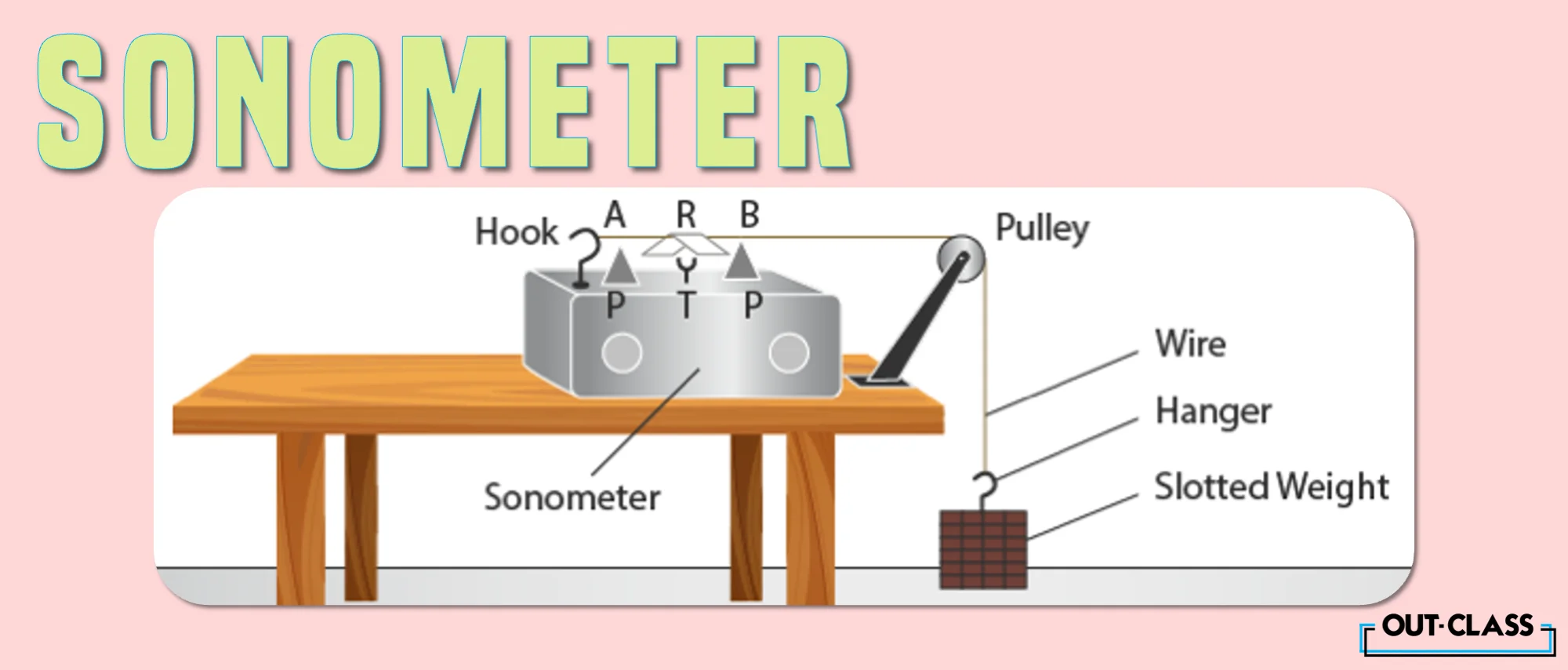Exploring Sound and Vibrations with the Sonometer
Have you ever wondered how sound waves are measured for intensity or frequency? I’m sure you haven’t. Intensity frequency… it's all too sciencey for almost everyone.
But whatever, for the sake of your exams you have to.
Well, here’s a more interesting question: 'How do performers change the notes on their instruments or tune them?' Or, 'How are the characteristics of sound in various forms studied in Physics?'
Well, intensity and frequency are your answer. More precisely, a sonometer.
A sonometer definition in Physics is a scientific tool designed to illustrate and quantify the relationship between sound and vibrations. In simpler words, it is an instrument used to measure the intensity of sound. The answer to all of these problems.
What is a Sonometer?
A long, thin wire that is stretched between two bridges is what makes up a sonometer. The wire has two ends: one is fastened to a hook, and the other, via a pulley, is fastened with a weight hanger.
You may change the tension in the wire by adding or removing weights. The vibrating portion of the wire's length can be adjusted by shifting the bridges.
When the wire is plucked or bent, it vibrates in a transverse standing wave pattern, creating sound waves.

What determines the sound's frequency and intensity?
The sound frequency is determined through:
- Tension
- Length
- Mass of the wire per unit length
On the other hand, the sound's intensity is determined through the vibration's amplitude. Sound strength and frequency can be measured using a detector, such as a microphone, an electric circuit, or a tuning fork.
The Transverse Vibration Laws:
A sonometer can be used to illustrate and confirm some significant transverse vibration laws, including:
-
Law of Length: If the tension and mass per unit length remain constant, the vibration frequency is inversely related to the wire's length.
-
Law of Tension: If the length and mass per unit length are constant, the vibration frequency is precisely proportional to the square root of the tension in the wire.
-
Law of Mass: If the length and tension of the wire remain constant, the vibration frequency is inversely proportional to the square root of the mass per unit length of the wire.
Uses of a Sonometer:
Sonometer can be used in various ways in Physics, Music, and Health. Some examples of uses of a sonometer are:
-
By varying the wire's length or tension until resonance is reached, it can be used to determine the frequency of an alternating current or a tuning fork.
-
By employing known frequencies and lengths, it can detect unknown masses or tensions.
-
By altering the material or geometry of the wire or box, it can investigate the propagation of sound through various media.
-
By altering the string's length or tension, it can make musical notes or tune musical instruments.
-
It can be utilized to gauge bone density or hearing sensitivity.
Conclusion:
A sonometer is a practical tool that aids our understanding and exploration of the intriguing realm of sound in Physics. Through the sonometer, we can learn the various ways that sound is generated, transferred, and recognised. As well as be able to identify the different ways music impacts our lives.



